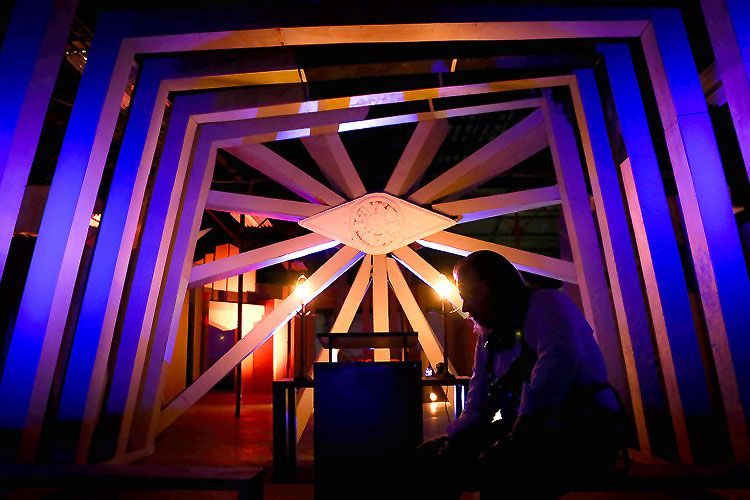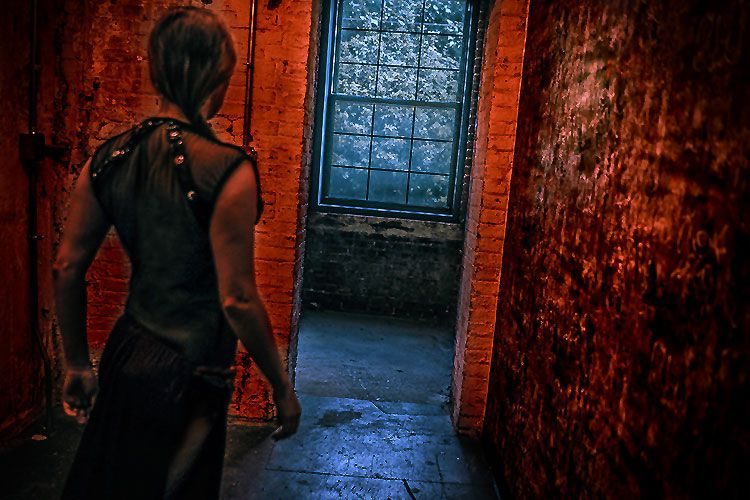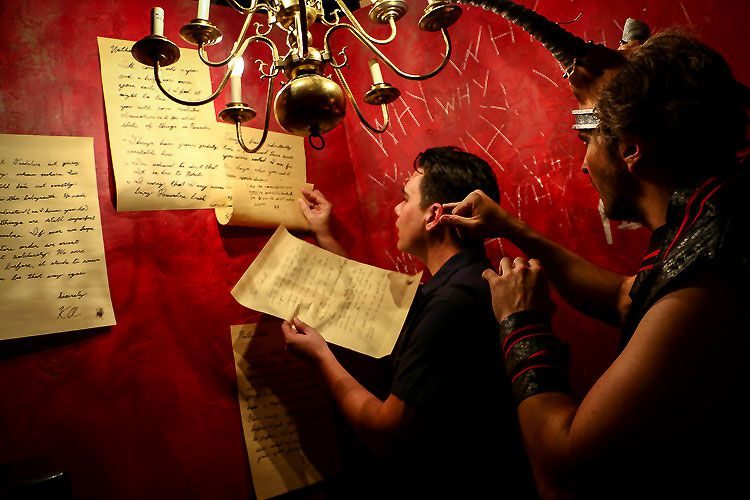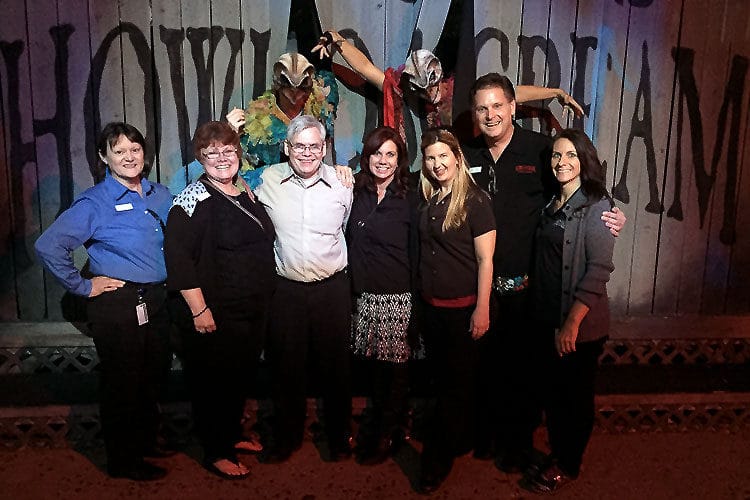Three transition strategies to enhance audience connection and engagement
By Ricky Brigante and Sarah Elger
When guests arrive at an attraction, they feel unsure of what they’re getting into. The first thing you need to do is transition them out of that uncertainty, so they’re able to focus on your experience. The transition must compel, or they’ll never become engaged. Transitions keep your guest engaged as much as possible.
Three Transition Strategies
We’ve developed three transitional strategies to help guests dive deeper into the story and engage with the experience. The three strategies focus on emotion, liberation, and “you matter.”
Emotion
Emotional transitions help people feel what you want them to feel as they’re going through your experience. When we guide our guests’ emotions, we bring them into a deeper connection with the experience.
The goal of emotion-based transitions is self-actualization, which is a fancy way of saying you realize your place in this world and your importance in that place—i.e., you have a role. It’s also about creating emotional autonomy. You want people to notice what they’re feeling, and you need to give them time to do this. Constantly throwing things at guests means they won’t process the experience or develop a deeper understanding of it.
Ultimately, you want your guests, players, or customers to feel they’re a part of something rather than just a passive observer. We have a long history of passive entertainment, but now we’re moving into the realm where being part of something is essential. An emotional transition is a way to do that.

When Shadows Fall
To showcase an emotional transition, we will talk a little bit about one of our experiences, “When Shadows Fall.” This attraction, which opened in 2016, ran in Orlando for three months in a 1500-square-foot warehouse built out so we could not only tell a story but bring in players to be part of that story. The story involved a secret society we created that people could join, take on different roles within that society, affect where the story went, affect other people’s stories, and affect the outcome.
We used an unreliable narrator to transition people’s emotions and engage them in the story. We introduced guests into a world by somebody they felt they could trust—and then something happened. They realized everything the narrator had told them wasn’t true, and that was the emotional hook we wanted.
Guests could choose if they wanted to join The Office or The Labyrinth based on who they wanted to be —“Do I want to be an evil version of myself, or do I want to be emotionally attuned with more sympathetic characters?” We gave them control of which emotional path to go down.
About halfway through the When Shadows Fall experience—after guests had engaged with characters, become part of the story, and were in their chosen roles, a giant booming voice announced, “Citizens, now is your time to choose,” which meant they could remain in their role, or choose something else. It was an opportunity—again—to figure out whom they trusted. In that same moment, the actors—who’d been leading the show up to that point—pulled back and said to the guests, “Do you want to stay with me or go with this guy or go out on your own? Be aware, if you leave me, there might be consequences.” Giving guests that freedom and time to think allows them to figure out how they feel rather than force-feeding that emotion. This is a way to make them feel empowered and engaged.

Liberation
Liberation means giving people the opportunity to make choices and discoveries. We have an unusual tool for doing this. You normally think of desensitization as a negative. For example, if your guests are walking through a haunted house and there are a lot of bright lights, loud sounds, scares, and things in their face, after a while, guests become desensitized, and all those things aren’t as effective. We flip that and use it as a tool to get people to push past any negative emotions we don’t want them to have and allow them an opportunity to make choices more freely and feel ready for whatever’s next.
Here’s an example of the liberation transition strategy from The Study of Dreams, a production we did last year. This experience introduced guests to its world through a series of simple transitions that added up to a complex transition—the liberation transition we’ve talked about. The goal of this progression of transitions was to encourage guests to be free to engage with this world we’d created in the ways we wanted them to and feel comfortable about it. This process began in the parking lot. We put veils over the faces of our guests, gave them headphones, put them into a car (they weren’t expecting a car ride), and sent them on a bumpy journey. They weren’t able to see, it was a little scary, and many of them were anxious, but they heard a welcoming voice and soothing music in their ears. They arrived at the destination, and a giant door rolled up. A bright light and lanky figure flanked by shadowy characters greeted them. An instant visual like this creates fear; however, after the first moment, the character stepped forward and said, in a genuinely welcoming way, “Come into my experience.”
We led the guests into a cramped, tight room with the same tall, dark figure. He sat them down, opened their mouths, tilted their heads back, and dropped some liquid from a vial into their mouths. Some guests were averse to or even disgusted by this and didn’t want to take part. However, once that drop was administered, it was something exquisite and soothing.
We were trying to have people experience what they usually associate with fear and anxiety in a soothing and compelling way. This juxtaposition of opposing reactions helped guests go from desensitization into feeling more relaxed. It’s a transition from feeling anxious about the next experience to being open to it.

In the next scene, guests found themselves in a dark room with fog, strobe lights, a character pacing back and forth, and a droning sound. Once again, we were building up that anxiety. From there, another character entered, and there was a violent but obviously consensual sex scene that took place about five feet in front of them. This made many guests unsure of how to react or engage. As soon as the scene played out, the characters ran away.
Our group of participants had a moment to sit there with nothing going on. There was low lighting, and they had some time to breathe. This was a moment that allowed them to feel they were in control and make a choice about whether to continue down this weird tormented path or continue to sit there. All the guests went forward.
Everything we just described happened in less than ten minutes of a two-hour experience. It was that whirlwind of quick transitions intended to desensitize our guests to the fears we didn’t want them to have and allow them to open themselves up to the fears we wanted them to have.
One last example from The Study of Dreams. One character led guests down a path to a shower scene. There was a beautiful woman in a shower, almost naked, and singing. Players could enter that scene and, if they did, they could decide if they wanted to remove their clothing, join her in the shower, and participate in a minor ritual scene with her. Most people would initially say “no thanks” to such an option, but because of the liberation preparation based on desensitizing that preceded it, most guests entered the scene.
It’s all about being comfortable with that discomfort. We wanted to get people to a point where they’d step out of their comfort zone and be excited about doing something that, when they arrived, they’d have thought they’d never do.

“You Matter”
The “you matter” transition is about making guests feel special. This is the most challenging type of transition. If you have a one-on-one experience or a small group with an actor, it isn’t as challenging to make those people feel special. But how do you do this if you have a group of 40 or 400 or 4,000 or more?
You want every single one of those people to be your biggest fan, your biggest advocate, and go around telling everyone how amazing your experience is and to be sure not to miss it. Making people feel they matter is a wonderful way to get them on your side. As we like to say, making people feel important is important. People arrive as a part of a group, and we want them to leave with each person feeling like an individual.
The way we do that is by breaking up the group using story elements. This isn’t the old operational arrangement of saying, “Half of you will do this, and half of you will do that, and then we’ll split the group again.” The story dictates why guests are in different groups—and, once they’re in the experience as a group, pulling them apart for a specific reason.
This makes them feel important and that they matter. Forcing someone over to the side of the stage because they’re told they’re stinky at least makes them different. It doesn’t matter if it’s a good reason or a bad reason to differentiate them. It’s just singling people out and making them feel unique. Another way to do this is to intentionally leave people behind. Doing this causes the anxiety to rise, because the safety net drops.
In When Shadows Fall, we had over 40 guests at a time, which may sound small on a theme-park scale, but we had to start there to analyze how to break people up and how to do that with purpose. We instantly split the group of 40 in half based on different elements, so they felt individually relevant. They came back together for the finale of the experience to witness it as a group, but, at that point, they had a different mindset. They were no longer the group they were when they entered the experience. They were a group of individually different people. After the finale, they went to the post-show lounge and shared stories. What’s interesting is they didn’t say, “We experienced this together” but “I have my personal story to tell.” Every single one of those 40 people had their own unique story to share, and this made them feel like they mattered throughout the whole experience.

A Word of Caution
A word of caution – use these transitions wisely. You need to understand how you want your guests to feel and use transitions to prepare them. The transitions themselves are part of your experience, and they’ll heighten those first impressions of scenes, characters, and story. That’s what creates memorable moments.
Key Takeaways:
- Transitions keep guests engaged.
- Three transition strategies are: focus on emotion, liberation, and “you matter.”
- Emotional transitions help people feel what you want them to feel as they’re going through your experience. You want your guests, players, or customers to feel they’re a part of something rather than just a passive observer.
- Liberation means giving people the opportunity to make choices and discoveries.
- Liberation is about being comfortable with discomfort—allowing guests to arrive at a point where they step out of their comfort zone and are excited about doing something that, when they arrived, they’d have thought they’d never do.
- The “you matter” transition is about making guests or players feel as special as possible.
We base this article on Ricky Brigante’s and Sarah Elger’s presentation at the second annual Leadership Symposium for Seasonal Attractions at the historic Queen Mary in Long Beach.
About The Authors
Ricky Brigante
Ricky Brigante is an immersive entertainment expert and founder of Inside the Magic, a respected source of themed entertainment news and information. After 13 years as Editor-in-Chief, Ricky sold Inside the Magic in 2018 to become a designer of immersive experiences. Now, as Vice President and Creative Technologist at Pseudonym Productions, Ricky helps create uniquely interactive entertainment that entices audiences to push boundaries and question reality. After four years of creating physical and digital experiences in Orlando, Los Angeles, and New York, Pseudonym recently moved to Philadelphia to debut a new series of ambitious immersive experiences.
Sarah Elger
Sarah A.S. Elger has designed theme parks and attractions for Walt Disney Imagineering, Universal Creative, SeaWorld, NASA, and Chimelong. Sarah has also worked in the world of Broadway. She founded Pseudonym Productions in 2015 to blend theater, gameplay, art, and architecture in engaging new ways. Pseudonym’s inventive productions aim to connect people in meaningful, unexpected ways through immersive experiences that entertain, engage, and captivate.







